

Matt Campbell
2026 MG U9 review
4 Hours Ago
Should you be forking out for superior headlight technology in your next new car? We test halogen headlights against LED, matrix LED, and laser to find out!
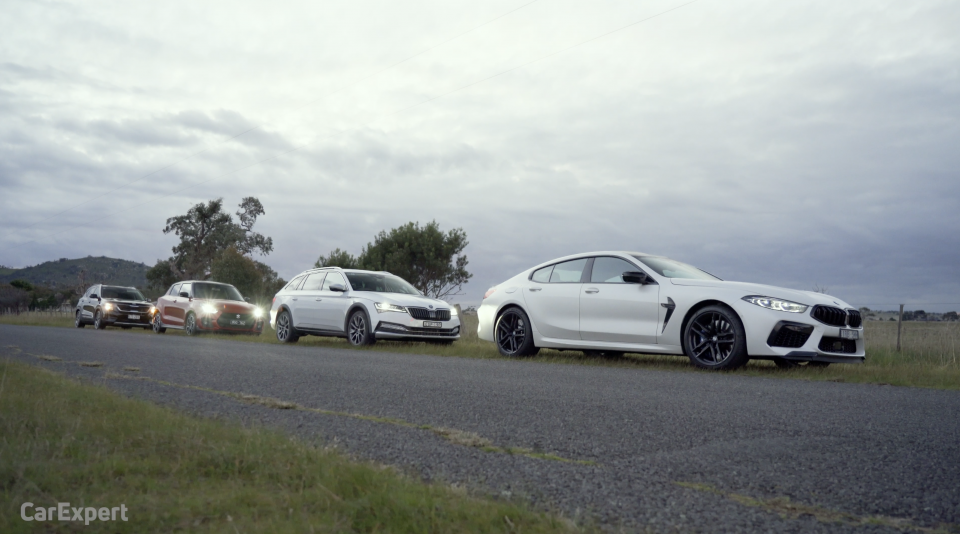
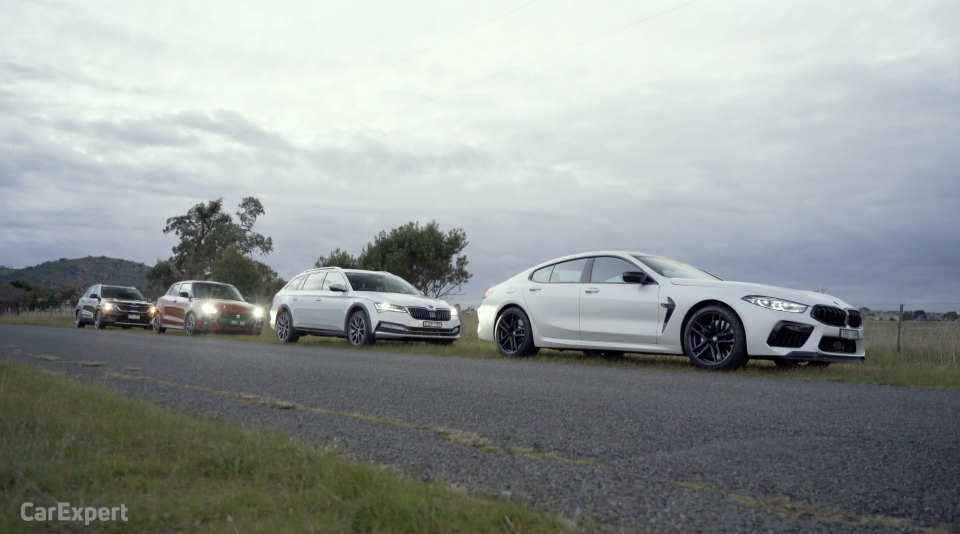

Founder
New from
$357,900
excl. on-roads

Founder
New from
$357,900
excl. on-roads


Founder
New from
$357,900
excl. on-roads

Founder
New from
$357,900
excl. on-roads
Quickly see how this car stacks up against its competition. Select any benchmark to see more details.
Where expert car reviews meet expert car buying – CarExpert gives you trusted advice, personalised service and real savings on your next new car.
Car technology is gradually evolving. One area that has exploded with innovation and new ideas recently is headlights.
Should you be paying extra to tick the matrix LED headlight option? Or should you go all out and look for a car with laser headlights?
We put each technology to the test, comparing halogen headlights with LED, matrix LED, and laser headlight technology.
This is by no means a scientific test. All brands will have differing levels of headlight technology available; we simply wanted to compare the headlight types side-by-side, and cut through the way each brand markets their technology.
It’s quite a long read, so we’ve made a video and offered a little more detail in the explanations below. You can jump ahead to other parts of this review by using the anchor links below.

Before we get stuck into our test methodology and the cars we selected, let’s have a quick look at the different headlight technologies currently on the market.
Just as an FYI – we deliberately excluded bi-xenon headlights from this test. This technology has almost entirely been phased out and there are only a handful of cars available on the market with this tech, so we decided to skip it and focus on halogen, LED and laser.
What are halogen headlights? These types of headlights have been around for donkey’s years. Halogen headlights operate in a similar way to old incandescent lights – the heat emitting lights you once (and may still) used around the home in lamps or light fittings.
A conductive filament sits within a glass enclosure filled with halogen gas. That filament then has a current passed through it, causing it to emit light and generate heat. In older cars, that light sat within a reflective prism and was shot through a plastic or glass headlight cover.
In modern cars, the halogen light sits within a projector cover with the light passing through the (normally glass) projector cover, which then disperses the light on to the road in front of the car.
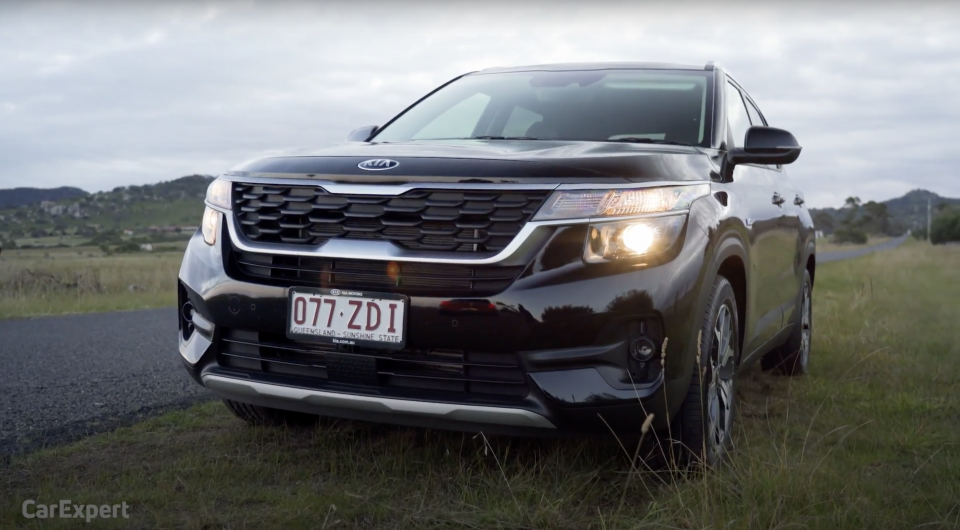
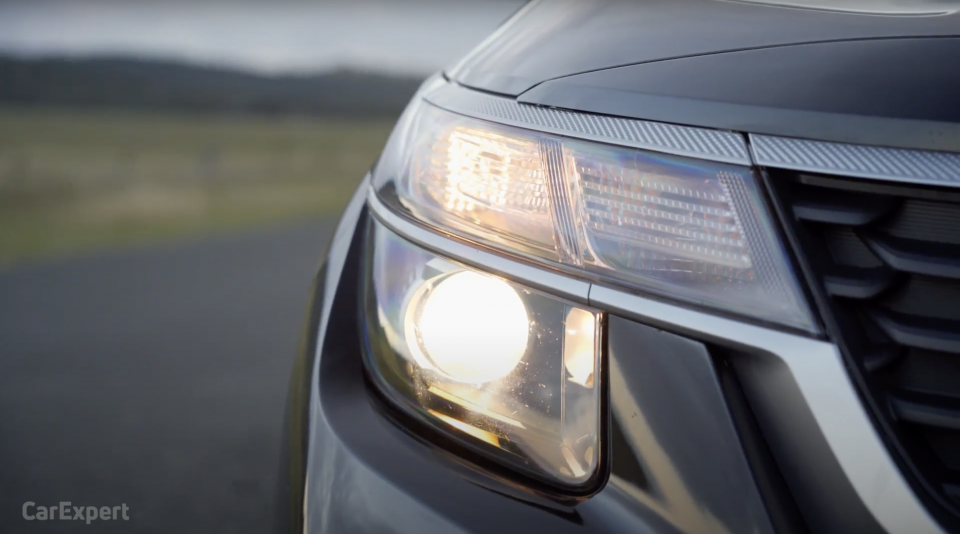
More powerful halogen lamps are then used for the vehicle’s high beam. Generally, these lamps draw around 50 watts of power, with most of that energy lost as heat as opposed to light.
Halogen headlight pros: The technology is inexpensive and fairly easy for consumers to replace on their own at little expense.
Halogen headlight cons: These lights consume an incredible amount of energy in comparison to more efficient lighting technology, which results in higher fuel consumption. Additionally, the light they provide is weak and the intensity can’t readily be adjusted on the fly.
Welcome to the 21st century. Actually, LEDs have been around for some time, just not in headlights. An LED is a light emitting diode, which is a semiconductor that produces light when a current is passed through it.
Cars have used LEDs for quite some time – all those flashing security lights, indicator lights, and even interior lights are often LEDs because they are durable and don’t require regular maintenance. You can imagine how much effort you’d need to put into replacing an indicator light in the dashboard.
Depending on the car, some vehicles will have one or many LEDs bundled into a headlight cluster. The more LEDs in the cluster, the more light that’s able to be produced. Some cars will have an LED low beam and a halogen high beam, while others will run a bi-LED setup, which is LED for the low beam and high beam.

Part of the reason LED lights have become so popular of late is not only the limited power use, but the compact diodes only require a small headlight assembly, which means designers can get more creative with the way cars look out on the road.
LED headlights are often fitted within a cluster that may look similar to a halogen headlight (a reflective prism), but that’s where the similarities end. Some LEDs have a life span of almost 20,000 hours (that’s about 18 years if you use the headlights for three hours per day, 365 days a year).

On top of that, they run much cooler than halogen headlights and also use considerably less energy, which means less fuel consumption. Most LED headlight clusters consume around 15-20W (around 1/3 of the power use of a halogen headlight).
LED headlight pros: Lower power use, which means less fuel use. Cooler operating temperature, which means less energy lost as heat. Very, very long lifespan.
LED headlight cons: LED headlights can be harder for a consumer to replace (given they require so little maintenance) and the clusters they sit in can be quite expensive to replace. There are also more parts within the cluster to ensure the lights remain stable and don’t point upwards, these parts can be costlier to replace.
This is arguably one of the biggest advances in automotive technology of late. The move from halogen to LED was a big step forward in light quality and intensity, but matrix LED headlights have taken it to the next level with real consumer benefits.
The Matrix is a great set of movies, but unrelated to headlights. Matrix LED headlights got their name from matrices, which are painfully frustrating things most maths and engineering students will learn at university.
A matrix in maths terms is a rectangular table full of numbers, expressions or symbols. How on earth does this relate to headlights?
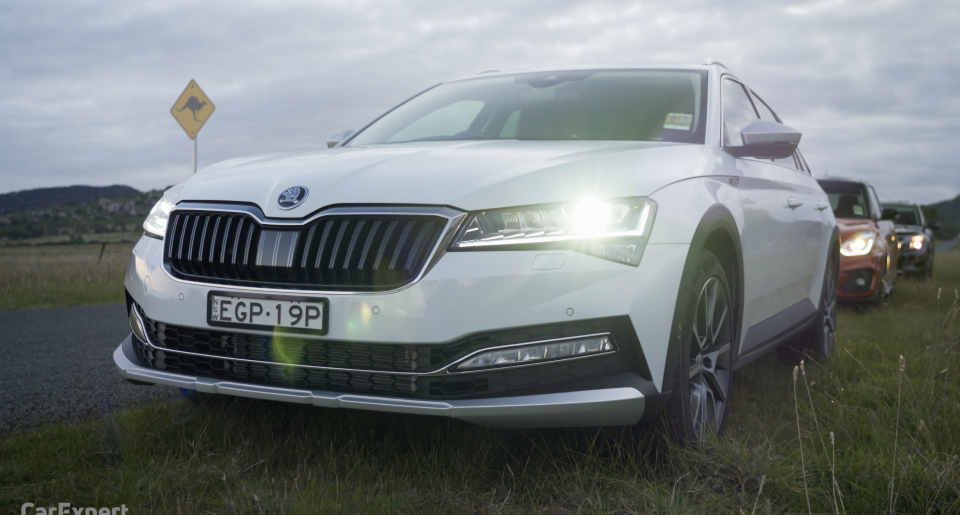
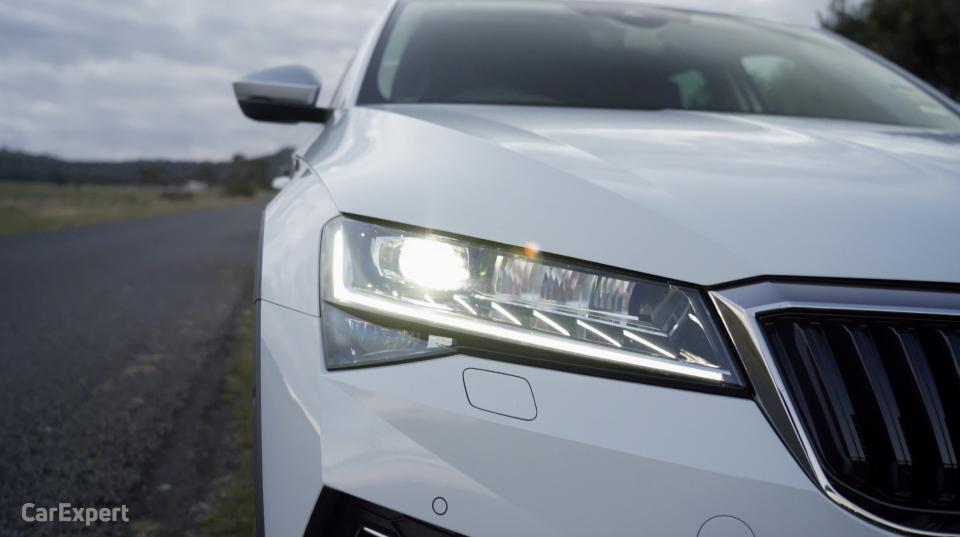
Much like the rectangular table in the maths world, in the car world the numbers, expressions, or symbols within a matrix are replaced with LEDs that can individually be shut down or power limited. The benefit of this is you can have one or all LEDs operating in a matrix to create a unique lightsphere.
This comes in handy when, for example, you want the centre row of LEDs to operate at a regular intensity, while the outer LEDs in the matrix are at full power. This comes in handy even more when you link them to a camera able to read the road ahead.
If that camera can detect a car in front, a car approaching, or even a pedestrian, the LEDs within the matrix can almost instantly be dimmed or switched off to not dazzle other drivers. That means you can have a high beam operating all the time and variably adjusting its intensity when an object enters or approaches the beam.
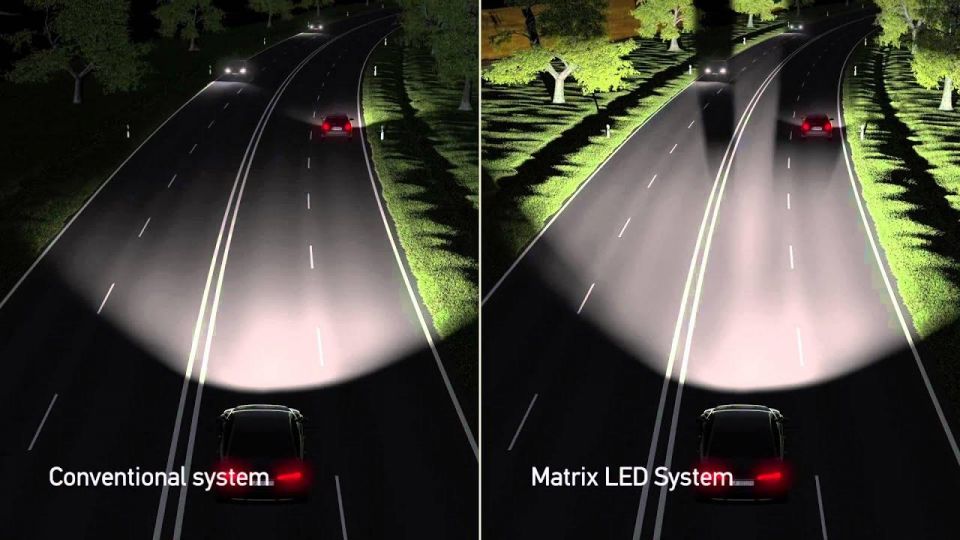
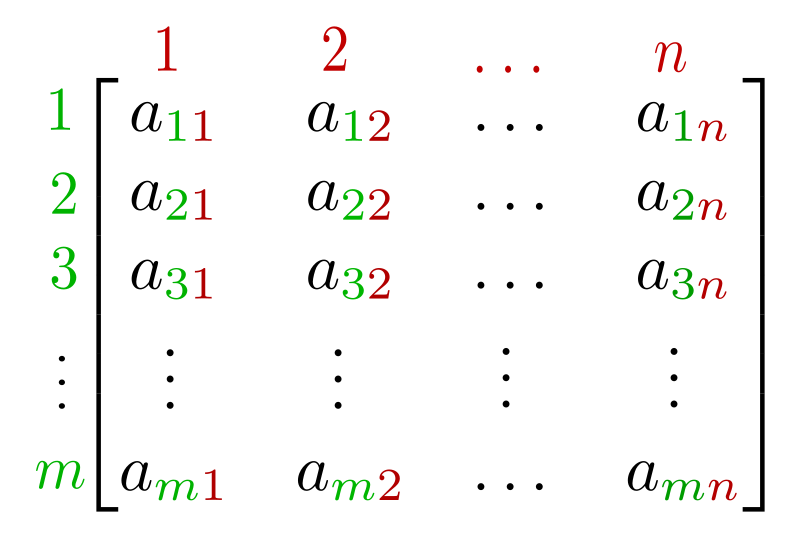
BMW takes it one step further by using the matrix LED to instantly flash an intense light at pedestrians on the roadside if they are about to step out in front of the car. This technology completely changes driving at night, especially in country areas, because it helps expose animals and other things lurking in the darkness that you otherwise wouldn’t notice with other traffic on the road.
Like all things, this technology varies immensely depending on the car you’re in. For example, the Holden Astra (RIP) used 16 LED modules, where the Mercedes-Benz S-Class has 84. That means you’ll get a much more precise and accurate beam in the S-Class in comparison to the Astra.
Matrix LED headlight pros: Incredibly versatile headlight technology that gives you high beam coverage even with other traffic around. It’s easy to use and requires little driver intervention.
Matrix LED headlight cons: As with regular LEDs, this technology can be expensive to replace or fix if the headlight is broken. Some systems also work better than others, so there’s a chance of accidentally dazzling other drivers inadvertently in older systems.
Each manufacturer does laser headlights slightly differently, so for this explanation we’ll focus on the laser headlight technology that’s available on a number of BMW’s new models (such as the M8 Competition and X5 M Competition) as standard or optional equipment.
While operation may be different between manufacturers, they all operate as matrix LED headlights below a certain speed threshold. With BMW and Audi, that speed threshold before laser headlight operation is 60km/h. Below that speed, the headlights use matrix LED functionality as explained above.
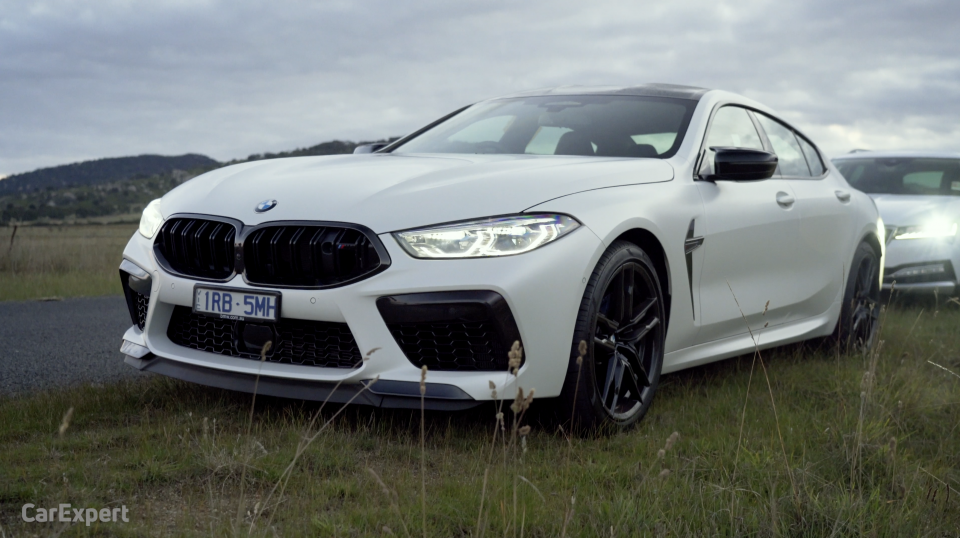
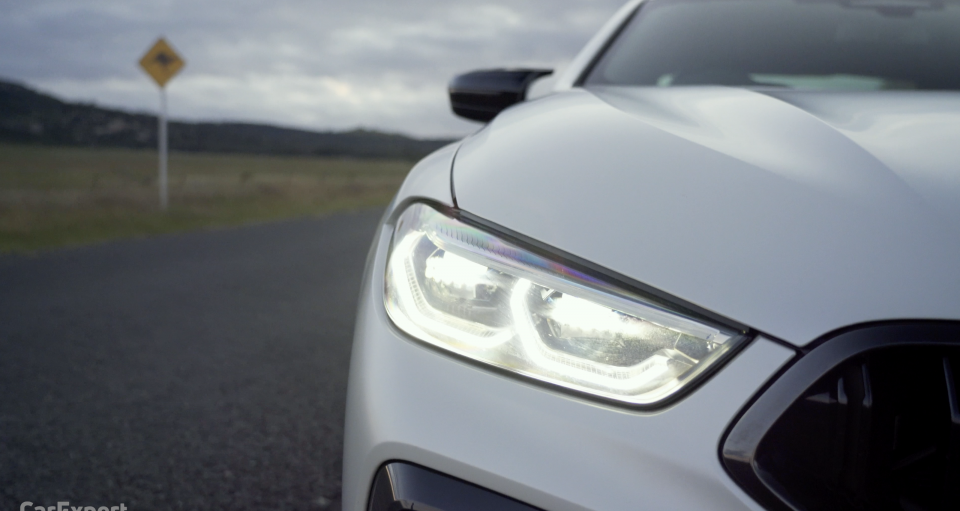
Within the headlight cluster are three blue laser beams that fire through a set of mirrors. The light produced by the three lasers then passes through an element filled with yellow phosphorus. At this point the light is around 10 times brighter than an equivalent LED headlight, which is far too bright to project directly on to the road.
Before exiting the module, this light passes through a diffuser before being shot out on to the road.
The laser module activates when there are no obstacles ahead of the car. When active, it uses 30 per cent less energy than an equivalent LED module and, according to BMW, projects up to 600m down the road offering superior visibility.
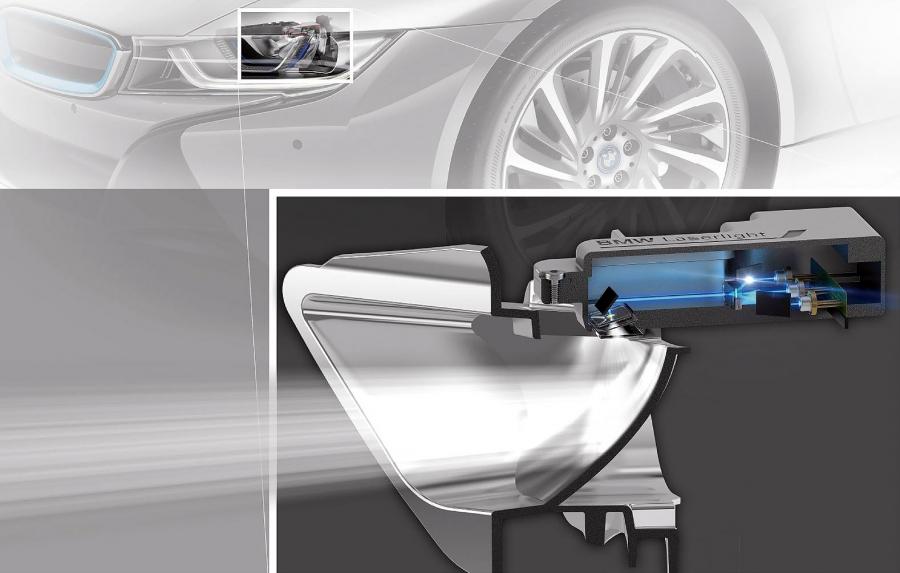
One of the big advantages of the technology is that it requires even less space than LED lights to operate, which is part of the reason vehicles equipped with laser functionality fit within such a small headlight cluster. This again gives designers the ability to toy with new headlight designs to take advantage of the design freedom.
Laser headlight pros: The most obvious pro here is the added light intensity on offer at speeds above 60km/h. The ability to light up 600m down the road is useful for drivers in the country.
Laser headlight cons: The cost of replacing a laser module is quite expensive compared to alternate technologies.
This isn’t a scientific test. The actual test procedure for headlights is incredibly detailed (you can see the IIHS headlight test and rating protocol here to see what I mean), so we wanted to keep it simple.

Our testing involved the following:
While all light measurement testing was done while stationary, we devised a workaround for the laser headlight technology due to it only activating at speeds above 60km/h.
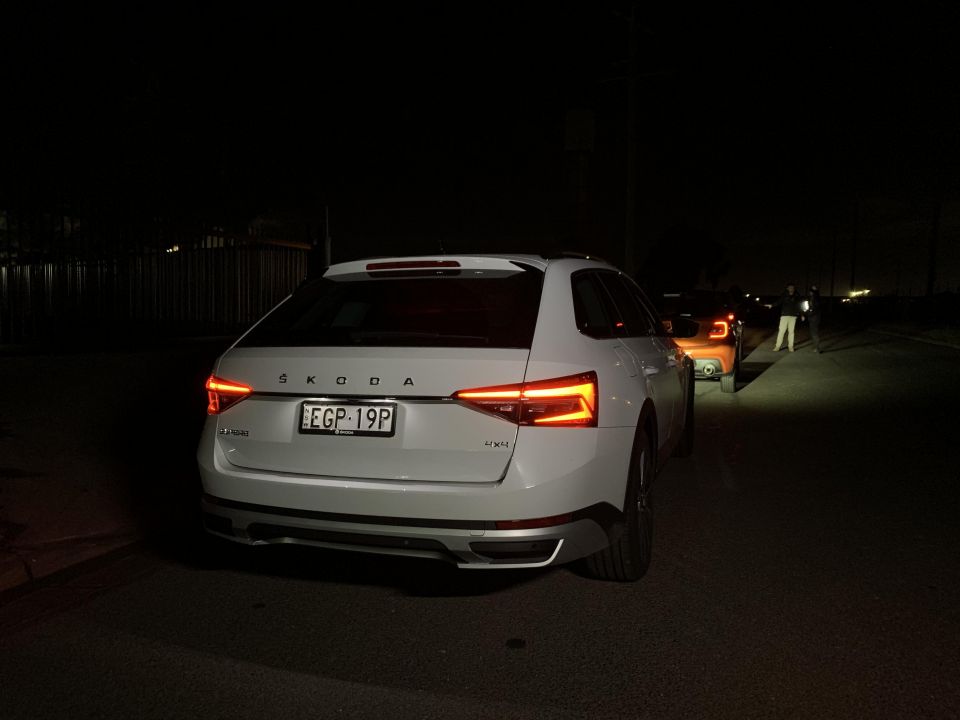
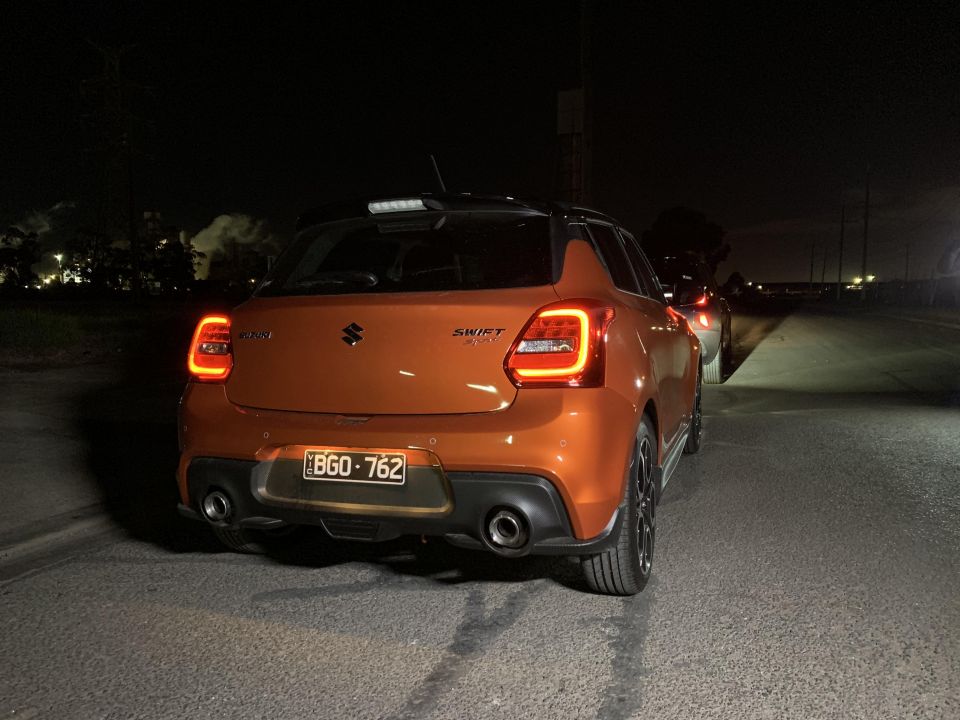
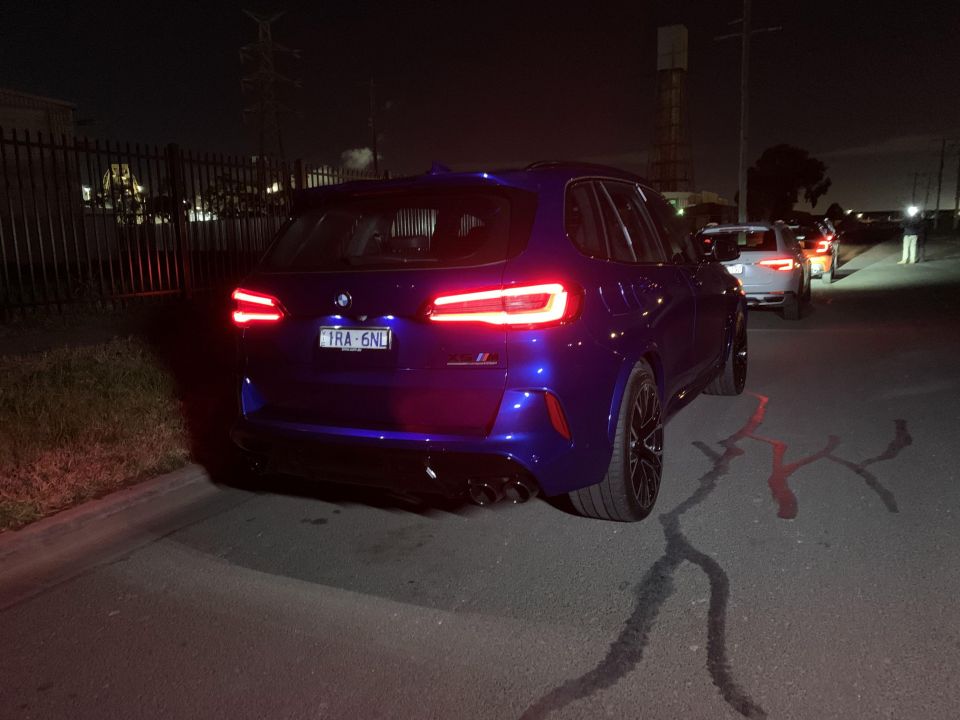
For this we approached a marker 50m from the light meter with the laser headlights active. As we hit that marker, the high beam would manually be disabled and a peak reading taken. It’s obviously not the perfect scenario, but it was the easiest way to achieve a reading.
We used the vehicles we had in the garage that week for the test, so they were effectively randomly chosen. The halogen vehicle was a Kia Seltos, the LED vehicle was a Suzuki Swift Sport (Series II), the matrix LED vehicle was a Skoda Superb Scout, and finally the vehicle with laser headlights was the BMW X5 M Competition (an M8 Competition was used for the country road test).
Keep in mind some vehicle models on the market are available with a choice of headlight technologies. The Seltos, for example, can be had with LED headlights on upper models – but this test is to compare headlight technology types, as opposed to the brand-specific headlight.
We hit the road first in the Kia Seltos, which has halogen headlights for both the low and high beams. As expected, the light quality was pretty poor and had a very yellow tinge to it.
The outer edges of the beam were diluted and when we enabled high beam the intensity of the light improved, but it was still quite washed out with little of the extra light projected into the bushes off the side of the road.

Next up was the Suzuki Swift Sport. This vehicle uses LED low and high beams, and the intensity of the light was immediately far more intense than the Seltos. The edges of the beam were very defined and the light was very white/blue in comparison.
When the high beam was switched on, the intensity of the light increased slightly ahead of the car, but the outer beam was far more prominent with light projected off the sides of the road and into the bushes. The perceived quality of light was a big step up from the Seltos.

We then switched to the Skoda Superb Scout. The Scout features matrix LED headlights offering LED coverage for both the low and high beam. It felt slightly brighter than the Swift Sport with low beam, with more coverage off the sides of the road.
Switching to high beam was like night and day in terms of the added brightness. The white/blue light intensity increased considerably and there was added coverage in front of the vehicle, ahead of the vehicle, and off the sides of the road. It was a really impressive amount of light.
Testing the matrix LED function involved us following one of the other vehicles and switching the technology on. It worked almost immediately and provided high beam coverage everywhere except the vehicle in front. It quickly switched off banks of LEDs as oncoming vehicles approached and didn’t dazzle the oncoming driver.
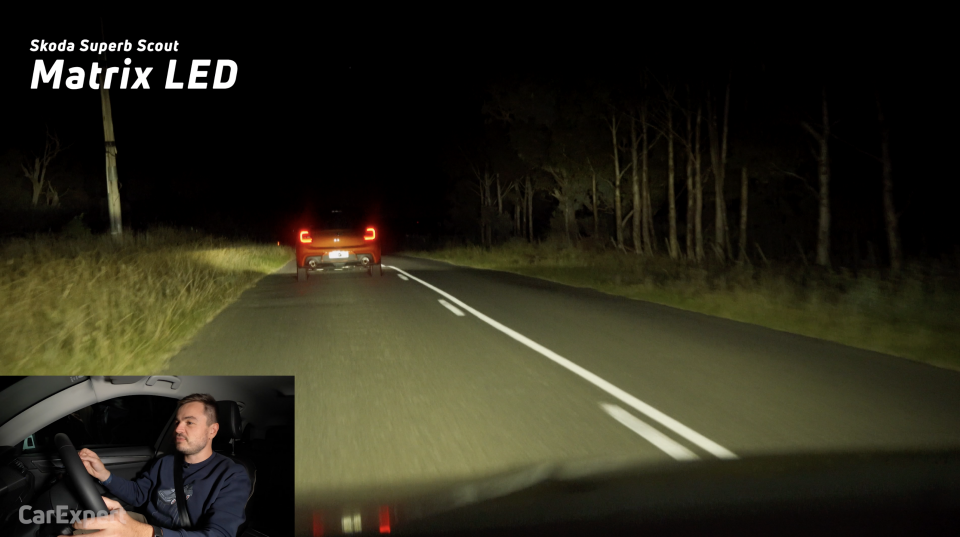
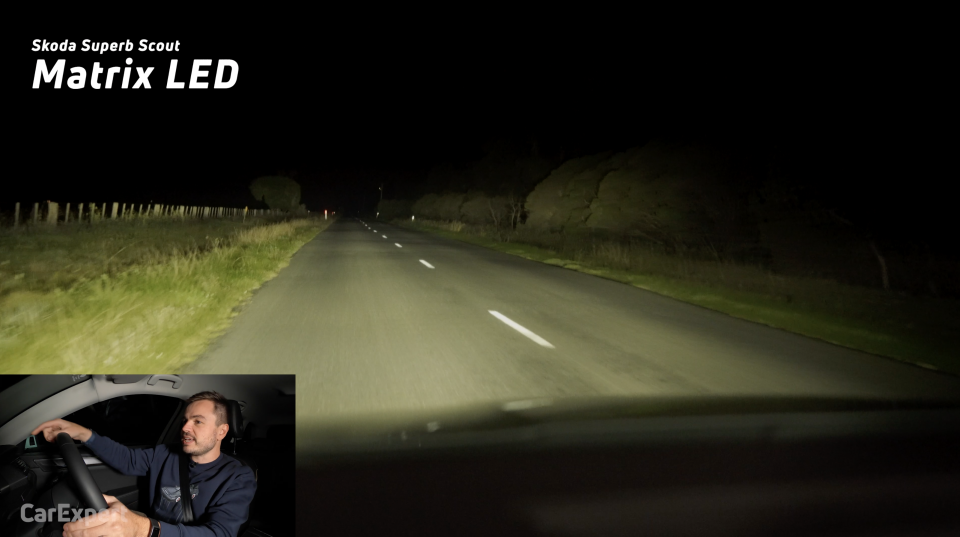
Where expert car reviews meet expert car buying – CarExpert gives you trusted advice, personalised service and real savings on your next new car.
Finally it was the BMW M8 Competition (we used an X5 M for the light meter tests, and an M8 Competition for the country road test). Much like the Skoda Superb Scout, it uses matrix LED headlights below 60km/h. When it reaches 60km/h and if the coast is clear, it enables the laser headlight function.
Below 60km/h the light intensity was excellent ahead of the vehicle and off the sides of the road. When high beam was selected it appeared about as impressive as the Superb in terms of coverage, but we felt it visually lacked the intensity of the Scout.
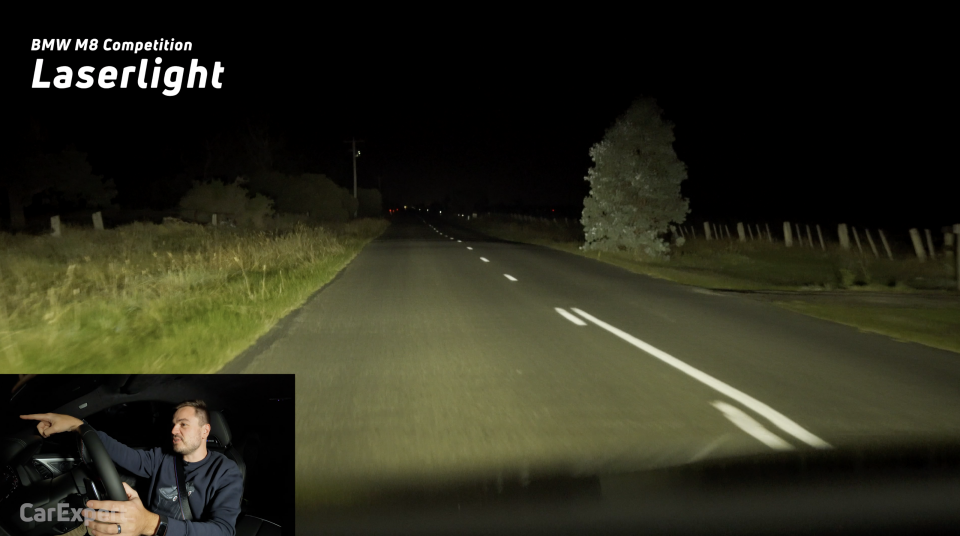
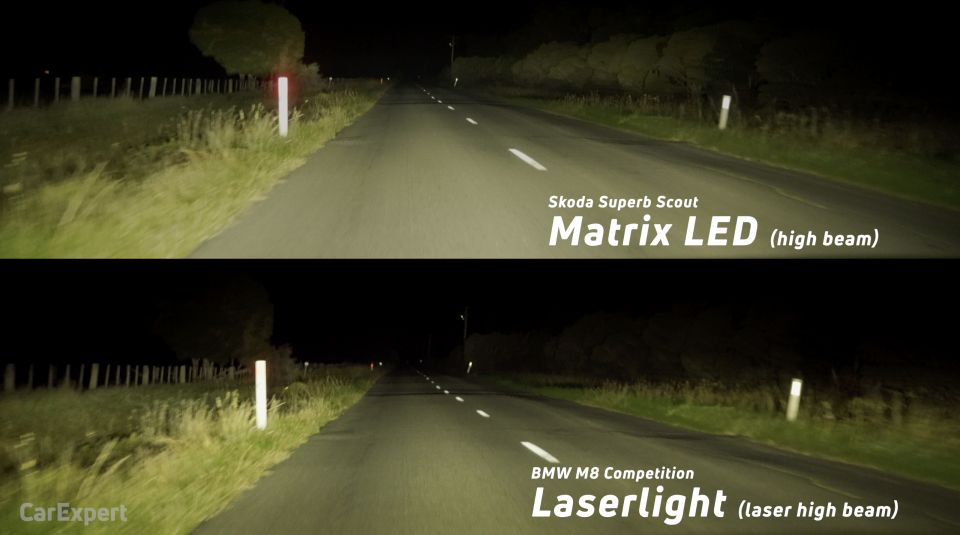
We increased the speed to 85km/h to enable the laser function. We were surprised to see little change in light intensity. There was a visible reflection from a corner quite a distance down the road, but the light immediately surrounding the car didn’t seem any brighter than the Superb, which was an interesting observation.
Now for the fun bit. We’ve put the results into a table to make them easier to read. The percentage increase of each technology is in relation to the lowest output light, which was the halogen headlight technology in the Seltos.
The results speak for themselves and show a remarkable 95 per cent increase in the amount of light hitting our lux meter when moving from halogen to LED using low beam. That number jumps 280 per cent when the high beam is selected. This explains why there was such a stark difference between the yellow tinge of the halogen light on our country road test in comparison to the more pure white LED light.
But what blew us away the most were the lights fitted to the Superb. The beam was an impressive 470 per cent brighter than the halogen high beam of the Seltos. It gives you an idea of how far this technology has come only in the recent few years.
As you can see with the results above, our observations during the country road test in the BMW were echoed in the test results. The light wasn’t as intense before the laser beams were active and then even when they were active, it fell just short of what was on offer from the Superb Scout (470 per cent brighter than halogen for the Skoda versus 348 per cent brighter for the BMW with laser lights enabled).
There are a number of things that could have influenced this result, such as the laser headlights not being properly activated (Audi offers a symbol on the dashboard when the laser light is active, but we couldn’t see anything similar with either the M8 Competition or X5 M) or perhaps the light meter being out of the field of the laser.


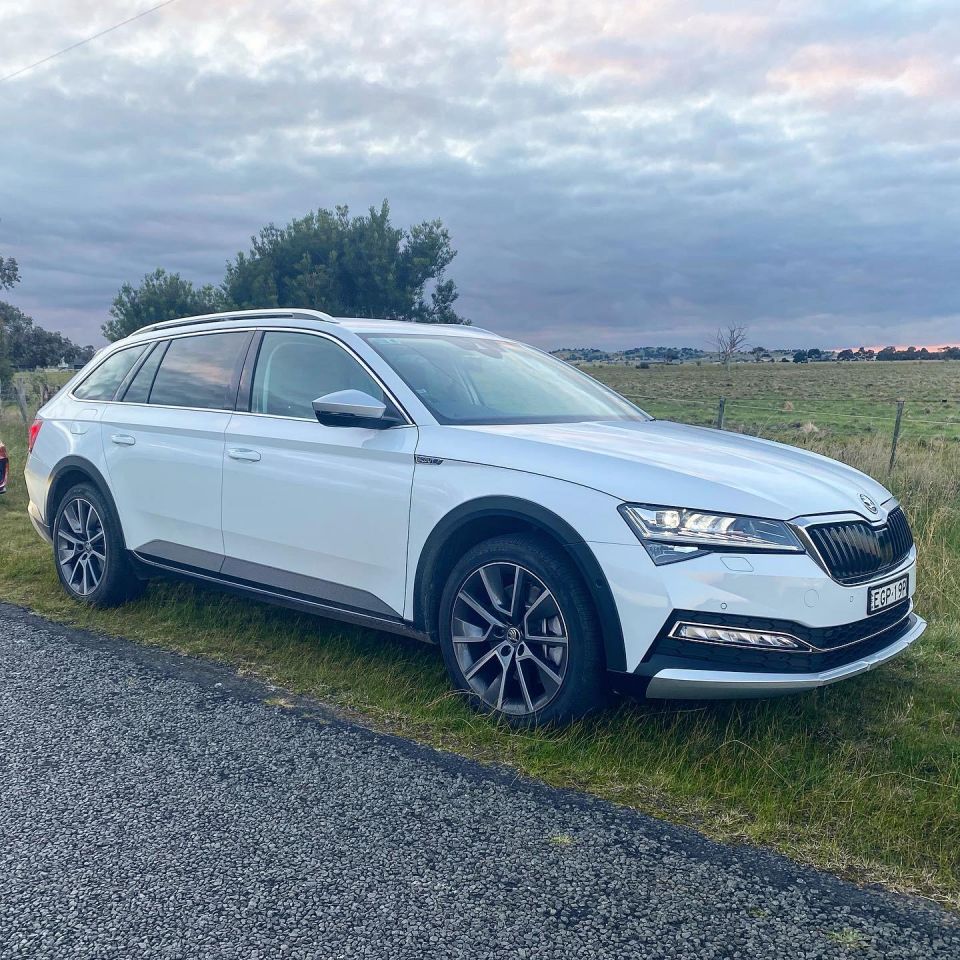

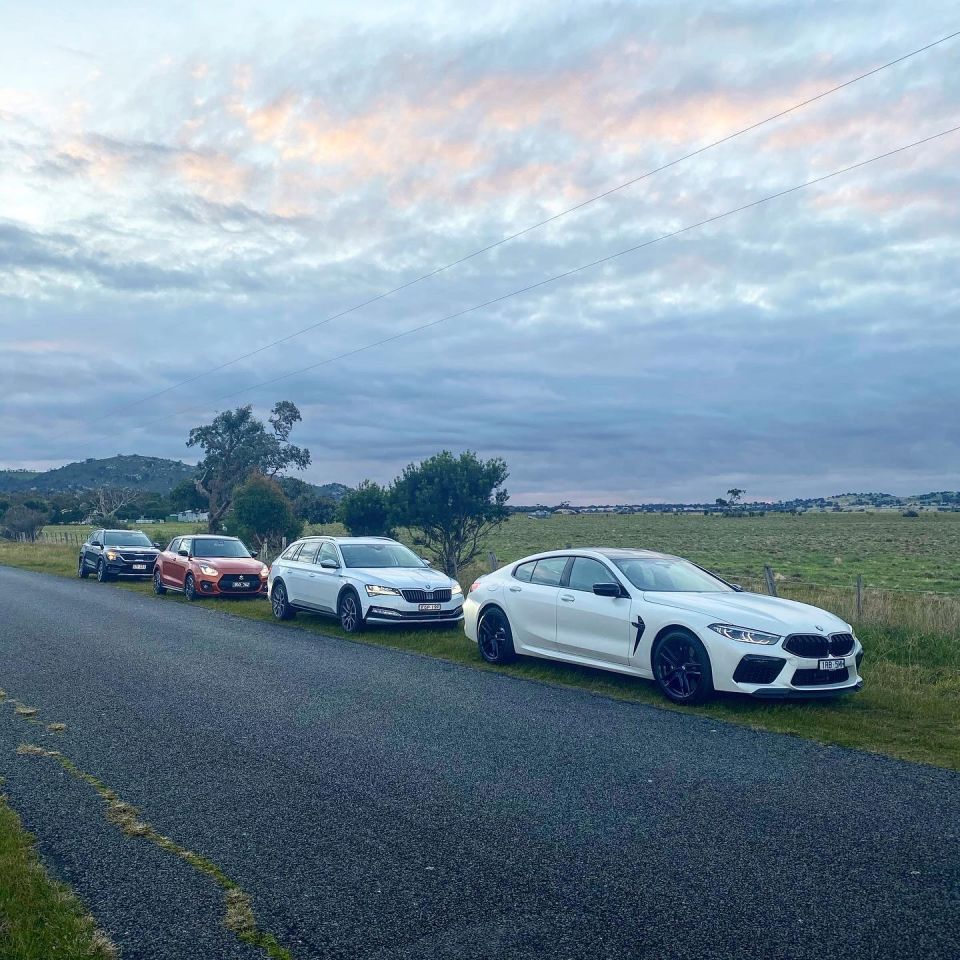
We also didn’t test the low beam results of the Skoda or BMW because as we explained earlier, we are testing the lighting technology as opposed to the particular implementation from the brand. The difference in test results between the Suzuki, Skoda and BMW at low beam were negligible.
Should you be paying extra to option LED or matrix LED for your next new car? Absolutely. The results speak for themselves and show you how much more light is available, and it’ll come in most handy when you do find yourself in the middle of nowhere, surrounded by animals itching to hop out in front of you.
We’d love to hear your feedback about the tests. Could we have done something differently that would have influenced the results? What would you have changed? We’d love to hear from you.
Where expert car reviews meet expert car buying – CarExpert gives you trusted advice, personalised service and real savings on your next new car.
Paul Maric is a CarExpert co-founder and YouTube host, combining engineering expertise with two decades in automotive journalism.


Matt Campbell
4 Hours Ago


William Stopford
20 Hours Ago


Josh Nevett
21 Hours Ago


Ben Zachariah
2 Days Ago


CarExpert.com.au
2 Days Ago


Damion Smy
2 Days Ago